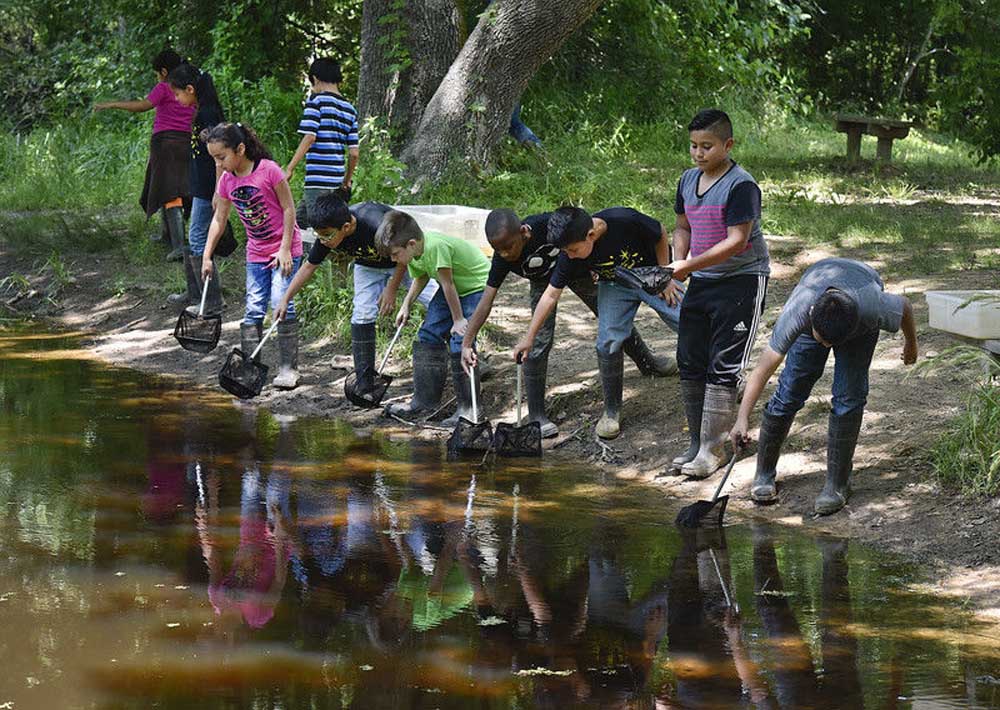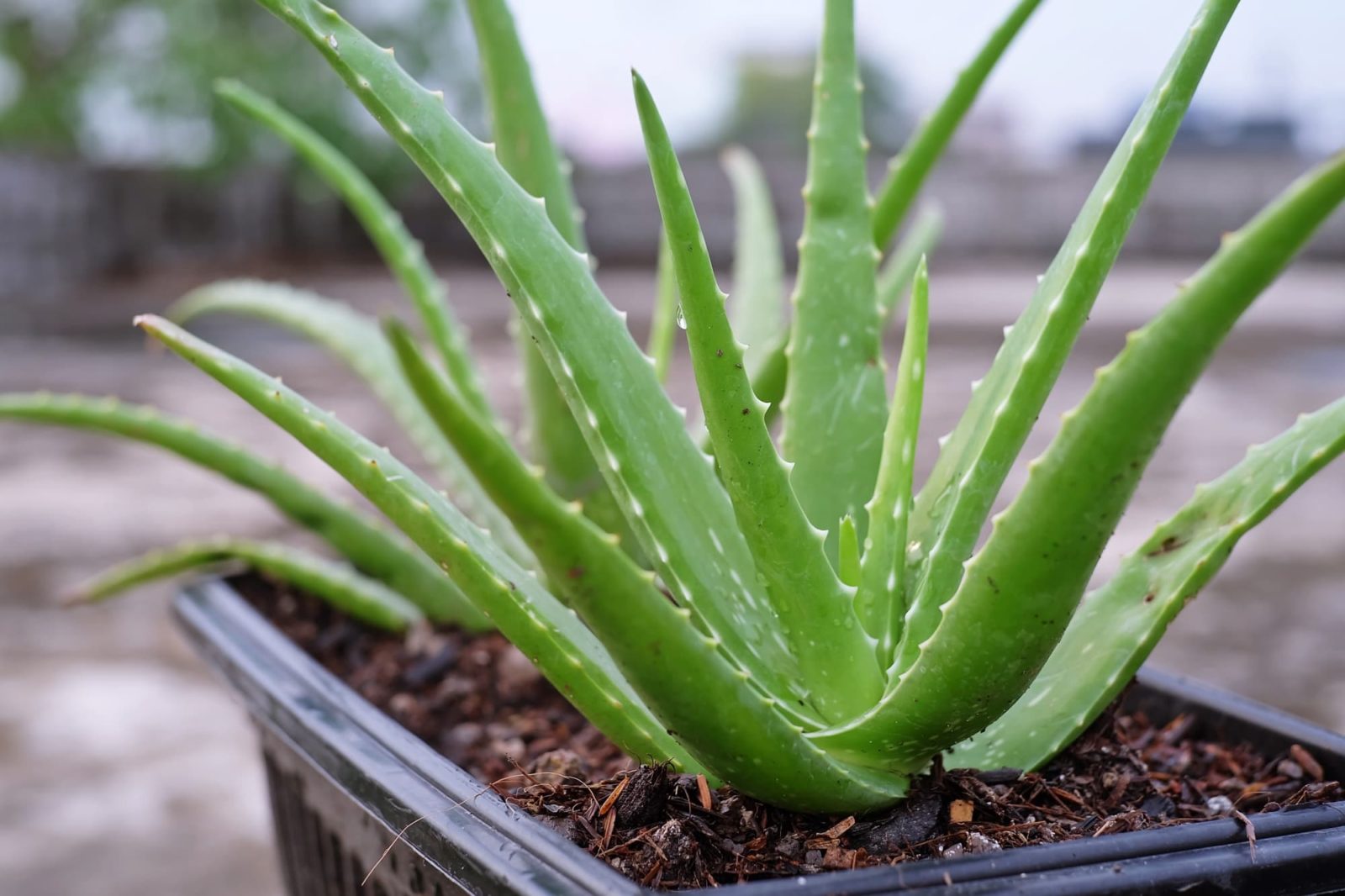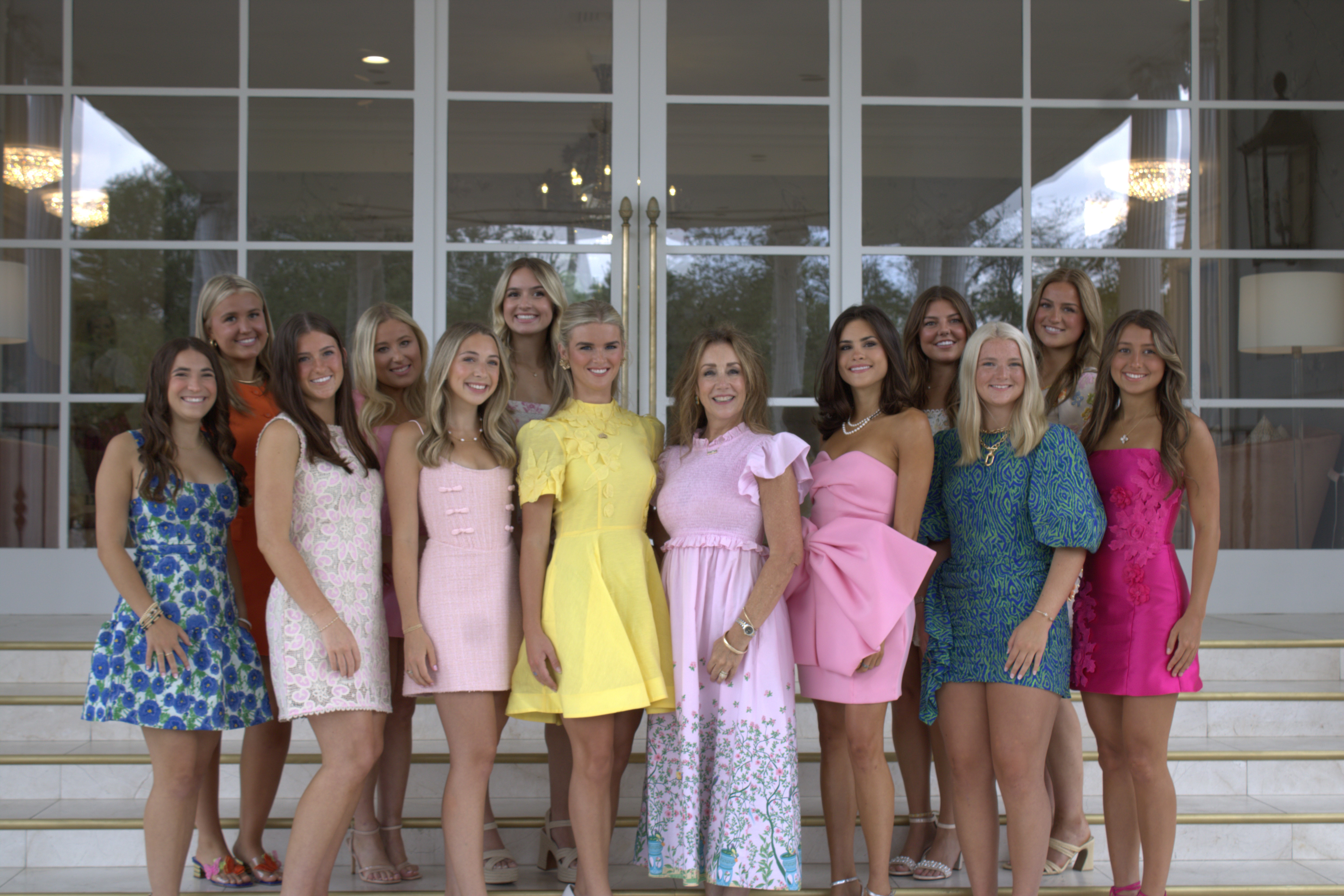Thinking outside the classroom box: At Camp Tyler Outdoor School, you don’t need books when you have bugs, birds and gooey pond scum
Published 5:15 pm Tuesday, August 2, 2016

- A group of fourth graders from New Summerfield Elementary School dip their sample nets in the water to collect insects, larva and other critters for study during a pond biology class on Tuesday, May 17, 2016, at Camp Tyler Outdoor School near Whitehouse. Andrew D. Brosig/Tyler Morning Telegraph)
DANNY MOGLE, danny@inmagtexas.com
Loli, a fourth-grader at New Summerfield School, is frustrated. For the past few minutes she has not taken her eyes off the bobber on her fishing line. More than anything, she wants the red and white bobber to drop below the surface.
Trending
Convinced she feels a bite, Loli yanks the cane pole and baited hook up and out of the water of the fishing pond at Camp Tyler Outdoor School.
“That’s too soon,” advises Scott Bosworth, who is guiding the children. “You’ve got to let the fish take it (the bait).”
Loli lowers the hook back into the murky water and tries her very best to be still. Moments later her persistence pays off. When she raises the pole, a perch on the line is flopping like crazy. She squeals in delight.
“That’s beautiful,” praises Mika Campbell, another camp-school instructor. “You caught the biggest fish yet.”
TRADITION
When Camp Tyler opened in 1949, it was untraditional, to say the least. The idea was simple: instead of teaching children about ecosystems, biodiversity and food production in the classroom, take them outdoors to observe, experiment, solve problems and even get dirty.
Trending
As the nation’s first year-round outdoor school, Camp Tyler helped advance the get-out-of-the-classroom movement in education. The post-World War II years saw much of the population move from farms into suburbs. Children increasingly had no idea that their ancestors caught or raised their own food and spent a lot of time outdoors.
After community groups donated the money to acquire the property on Lake Tyler, the Smith County Youth Foundation was formed to build and equip the camp. Tyler Independent School District agreed to operate it.
The original buildings were two large cabins with group bunk rooms, the director’s house and Bradford Lodge, a mess hall and activity center with a large stone fireplace and knotty pine paneling.
In 1952, Camp Tyler added a working farm. Campers pitched in to feed the goats, gather eggs and tend to the vegetable garden. More recent additions include more cabins, a replica one-room schoolhouse, space for meetings, a zip line and climbing wall.
For generations, children have spent time at Camp Tyler hiking through woods, identifying plants and animals, looking at organisms in pond water and fishing.
Patricia Taylor Wells was a camper in 1960 and 1961 as a student at Bell Elementary School in Tyler. She is the author of a new book, “Camp Tyler: A First of Its Kind.”
“Like so many children in the East Texas area, my childhood is filled with memories of class trips to Camp Tyler,” she shares in the book.
She joyfully recalls the branding ceremony, during which each school burns its brand into mantles or timbering in Bradford Lodge. “The boards from every school year still hang from the rafters or on the walls of the lodge – a testament to the great times we all had at Camp Tyler.”
FUTURE
Jim Cunningham is all too aware of how beloved Camp Tyler is. As its chief executive, he must carefully preserve the camp’s timeless look and traditions while introducing new programs and innovations that the computer generation demands.
The Smith County Youth Foundation changed its name to Camp Tyler Foundation in 1996. To offset the rising maintenance costs, the foundation and Tyler ISD opened the camp to other schools and youth organizations that pay to use it. In 2008, the school district relinquished complete control to the foundation.
Although providing on-site programs to children during field trips and overnight camping remains the school’s primary source of revenue, the camp’s leaders are placing more emphasis than ever on marketing it as a special-event destination.
“We want to make it available to everybody,” says Cunningham. “We are capable of hosting events both large and small.”
Cunningham and the board are betting that the unique combination of beautiful setting, adventure attractions and comfortable facilities will make the camp an irresistible site for family and school reunions, group outings, birthday parties and retreats.
“Bring your program to our facility!” entices the camp’s website. “With a large dining hall that doubles as an activity area, five cabins that sleep 120 campers, and access to 385 acres, the possibilities are endless.”
A photo on the website shows a beaming bride and groom with the lake in the background. “The beautiful shores of Lake Tyler provide an amazing backdrop for your special day,” reads the caption.
“We just want people (looking for a venue) to give us a shot,” said Thomas Guderjan, president of the camp’s board.
Guderjan draws attention to the fact that the camp was about to host the Weekend Warrior Race, a 5K obstacle run and 1-mile kids obstacle course that was expected to attract hundreds – many who may have never stepped foot at the camp.
He says hosting special events and summer camps are ways to use the camp as a community resource, attract new people and, yes, generate money.
EDUCATION
Mika Campbell, one of the instructors working with Loli and her classmates, was once a teacher at Tyler ISD.
“I fell in love with what they were doing out here,” she said during the group’s lunch break. “I love math and science and that is what I get to teach.”
During outings filled with exploration and adventure, the camp’s instructors reinforce classroom lessons and concepts found on Texas mandatory tests. In other words, they make learning fun.
“Some of the kids are in awe of what they encounter,” Campbell says. “They are Millennials. They don’t get out much. They spend all their time playing video games.”
The fourth-graders from New Summerfield are in Afterschool Centers on Education, a federal program for schools with many economically disadvantaged students. The program requires that students take part in enrichment activities that allow them to explore science.
“They love it (spending time at Camp Tyler),” said Stace Raspberry, one of the program’s leaders. “I’m blown away with how quickly they are picking up the vocabulary. … And the science vocabulary and knowledge sticks with them.”
After lunch, Campbell and Bosworth gather their group under a big tree and pass out binoculars and bird identification field guides.
“Birds are a good indicator of how healthy an ecosystem is,” said Bosworth, as they enter a field where birds are darting into the grass to feast on bugs.
“Look over there, sitting on that fence. What (bird) is it?” Bosworth asks. “Look at its shape.”
Several students put down binoculars and check their field guide. “It’s a mockingbird!” one boy blurts out, clearly thrilled to have solved the riddle on his own.
“That’s right,” says Bosworth. “Excellent.”
The boy doesn’t know it, but thanks to this moment of discovery, he has just become Camp Tyler’s latest success story.






